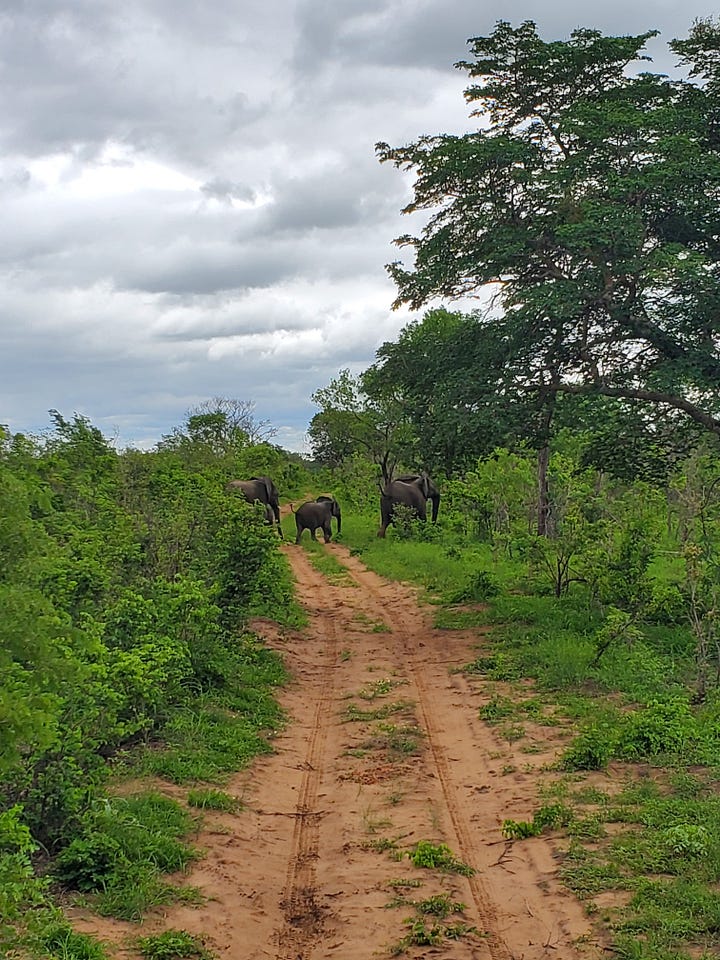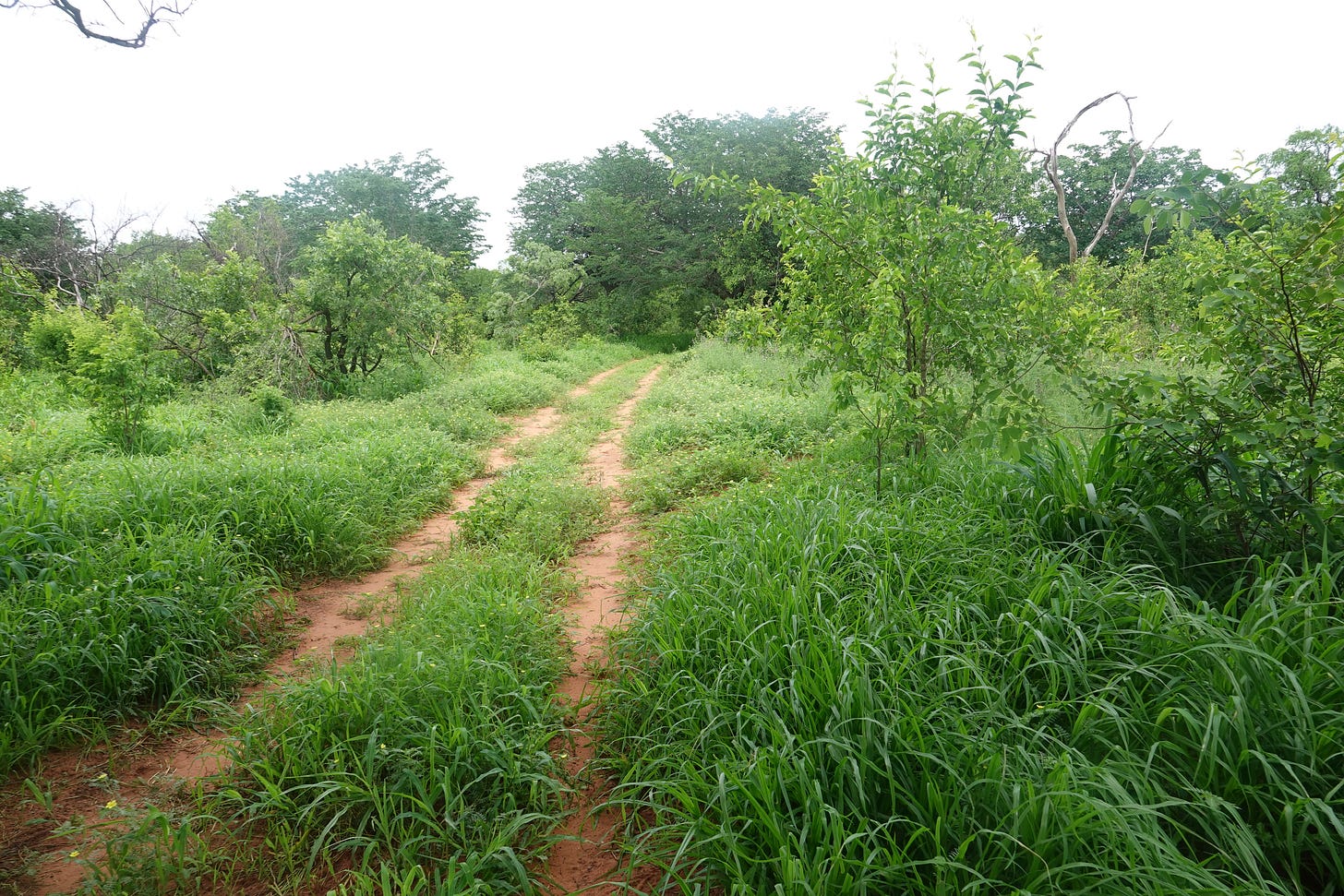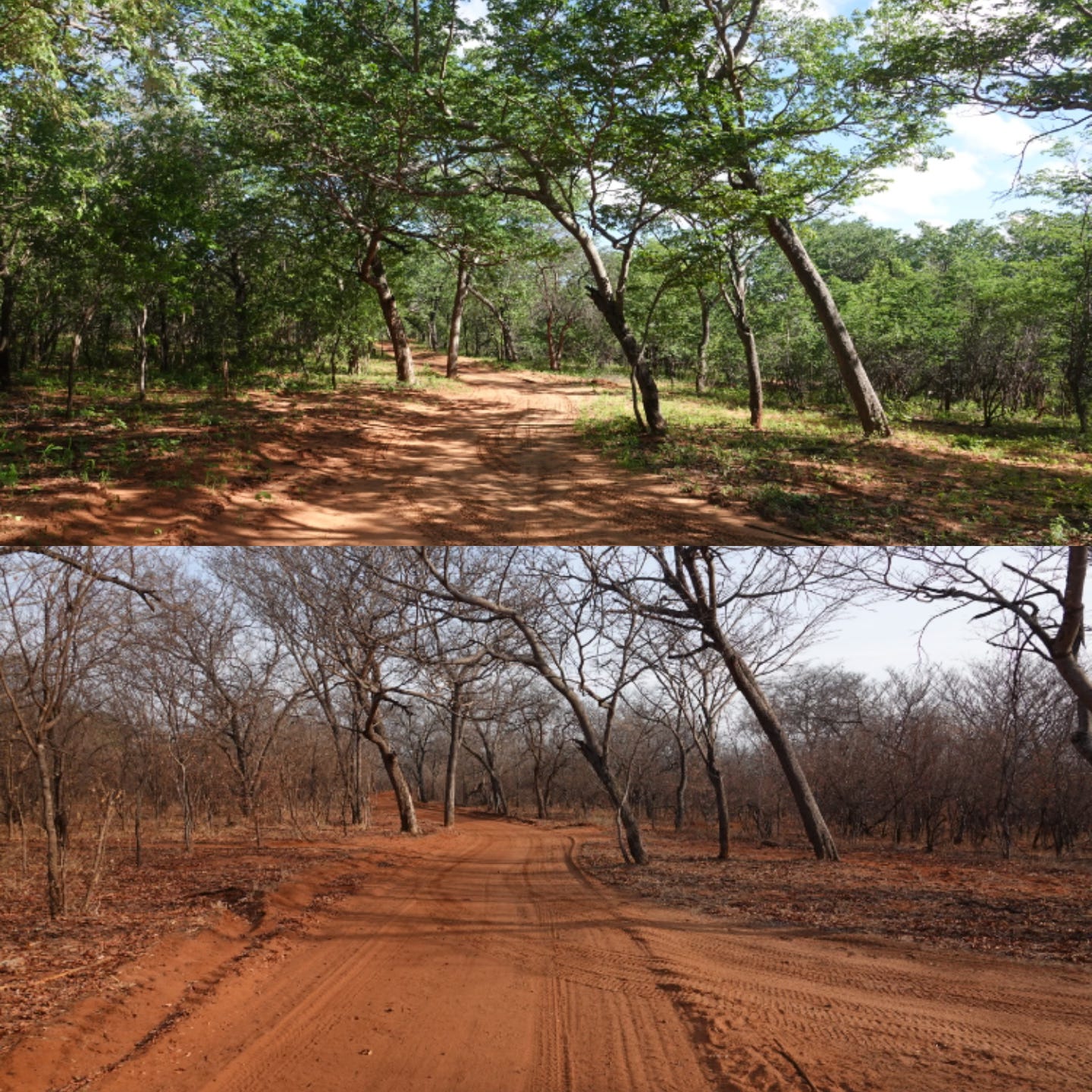Deep in the heart of Panda Masuie, our 30,000-hectare protected area near Victoria Falls, where the Kalahari sands stretch beneath a canopy of giants, lies a rare and remarkable ecosystem - one that whispers the ancient stories of the land.
This is a Teak Forest, a place of transformation, resilience, and life.
For centuries, these woodlands have stood as guardians of water, shelter, and sustenance, shaping the rhythms of wildlife and the land itself. And here, at Panda Masuie, Wild is Life, the Forestry Commission, and IFAW have worked together since 2017 to protect, study, and honour this extraordinary landscape.
A Forest Like No Other
At first glance, a Teak Forest may seem like any other woodland, but look closer, and you’ll find its secrets written in its very soil. Zambezi Teak (Baikea plurijuga), with its deep, rich bark and towering stature, dominates these woodlands, standing sentinel over a thriving understorey of Bauhinia and Baffia shrubs. These shrubs - tough, unassuming, but deeply valuable are a critical food source for elephants, kudu, and other browsers that weave their way through the forest.
Unlike other Miombo woodlands, Teak forests are denser, rich with life and layered with complexity. And yet, they are rare. Their presence is tied entirely to the fragile Kalahari sands, a soil type shaped by wind and time, found only in Southern Africa.
A Landscape in Flux
Here, nothing is static.
With the arrival of winter, the trees shed their leaves, standing bare against the sky, skeletal yet steadfast. To the untrained eye, it is a scene of stillness - almost lifeless. But beneath the surface, the forest waits, its roots deep in the sands, holding on.
Then comes the first rain.
Almost overnight, the transformation is astonishing - an explosion of fresh green pushes through the dry bark, the air thick with the scent of new life. Leaves unfurl, shrubs swell with new shoots, and the entire landscape shifts from golden dust to emerald canopy. What was barren is now bursting to life.


For the Wild is Life and wild elephants of Panda Masuie, this cycle is life itself.
During the dry season, they strip the bark from shrubs and trees, using every resource the forest offers. But as the rains return, so does their world of abundance—lush leaves, new growth, and an ever-renewing pantry of nourishment.
The Role of Teak Forests in the Wild
Teak forests are not just a home for wildlife; they are a lifeline for the land itself. The Kalahari sands are fragile, prone to erosion and desertification when disturbed. But intact teak forests act as nature’s great sponge, absorbing the rains, slowing runoff, and replenishing deep underground aquifers that sustain millions—both human and animal alike.
To lose them would be devastating.
Jack: The Elephant Who Shows Us the Way
Through the eyes of Jack, a once-rescued, now fully wild elephant, we are learning just how crucial these forests are.
Released in May 2021 after years of rehabilitation and rewilding, Jack has been teaching us about the movements and choices of an elephant in the wild. Through GPS tracking, we have followed his journey, mapping his use of different habitats, watching how he instinctively gravitates to these teak woodlands - seeking food, shelter, and refuge.


His path is not just his own; it is a glimpse into the world of countless elephants before him, a testament to the irreplaceable role of Panda Masuie’s forests.
The Future of the Teak Forests
The story of these woodlands is not just one of history but of protection, regeneration, and survival.
As stewards of Panda Masuie, we remain committed to preserving this fragile, vital ecosystem - for the elephants, for the land, and for the generations still to come.
Because forests like these… They are worth saving.
Are they not?










A truly inspiring post, Jos. Thank you! We all need to be regularly reminded of the fragility of these delicate landscapes and the ever increasing, crucial role they play in our wild world. Not only for the wilderness, but for mankind and the planet at large. Preservation of biodiversity is more than critical. It is essential.
Thank you so much for taking me back to see my homeland in all its glory. Your photography of the before and after are just so revealing and one never tired of seeing this ever changing vista.
Man doesn’t have to do anything. Nature does it all by itself. Wonderful, thank you